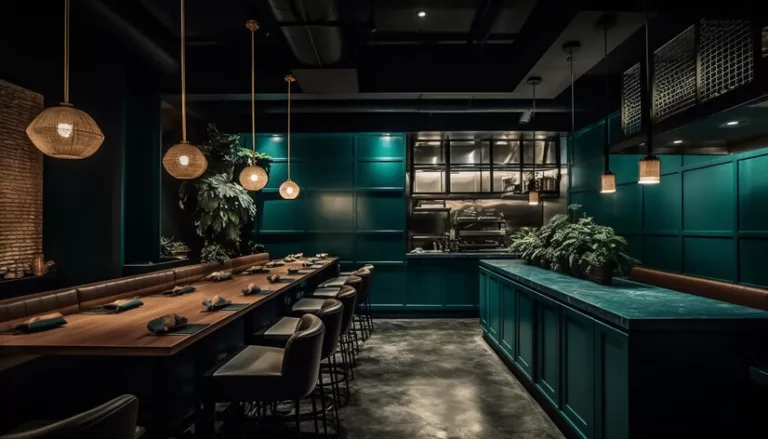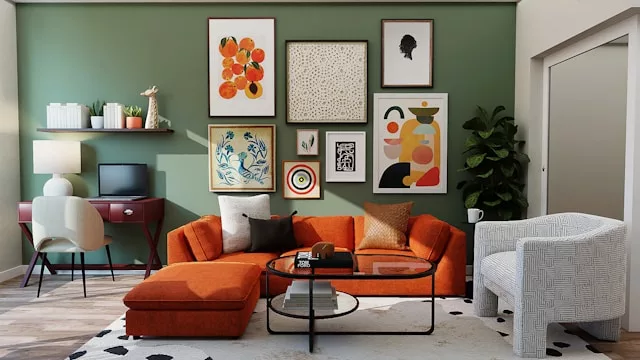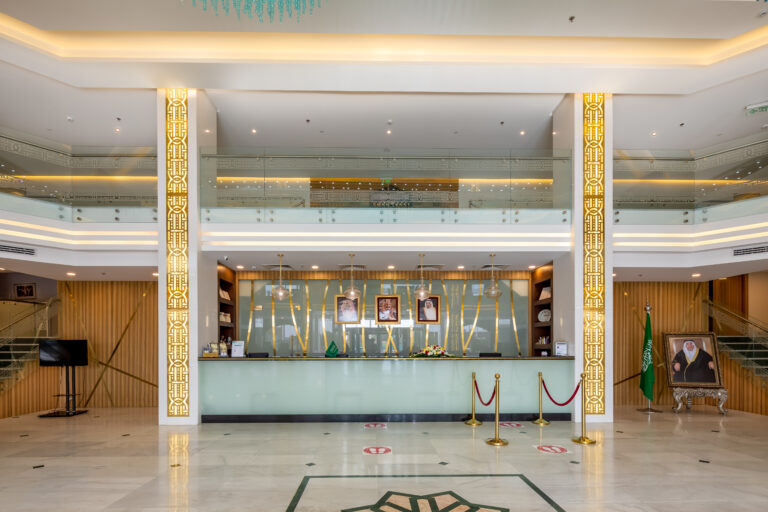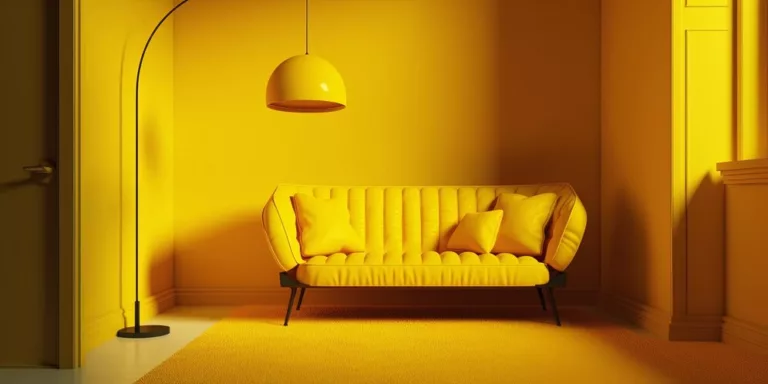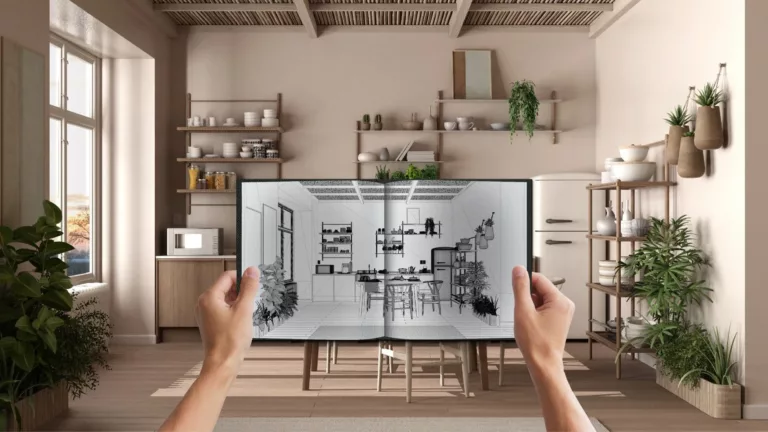Interior design for hotels
is the essence that shapes the heart of the guest experience. When a guest steps into a hotel, those first few moments are crucial; they take in the colors, lighting, furniture, and overall atmosphere, that’s why Hotel aesthetics play a key role in determining the guest’s comfort, satisfaction, and desire to return. In this article, we’ll explore how thoughtful hotel interior design can elevate the guest experience and leave an unforgettable impression. Vera company is an interior design asset in creating luxurious and comfortable interior design for hotels.
1. First Impressions: The Reception Area as a Statement
The reception area (lobby) sets the tone for the entire guest experience design. It’s where the guest begins to form a perception of the space, and the guest experience design comes into play, creating a welcoming and warm atmosphere that reflects the hotel’s identity and makes guests feel valued. Key elements that shape a strong and positive impression include:
- Colors: Neutral tones with warm accents like beige, brown, or gold evoke feelings of comfort and calm, so thoughtfully applied vibrant colors can highlight the luxurious touches.
- Lighting: Natural light enhances psychological comfort, while well-designed artificial lighting adds sophistication and warmth.
- Furniture: Elegant, comfortable furniture makes the space feel both luxurious and approachable.
- Scents: Subtle, refined fragrances in the reception area provide a sensory touch that leaves a positive impact on guests.
2. Room Design: Hotel Aesthetics Meet Comfort and Functionality
Guest rooms are where visitors spend the majority of their time, so they must serve as a sanctuary of comfort and tranquility, here, comes the role of the interior design of hotel rooms to enhance the guest experience by focusing on the smallest details that combine beauty with functionality:
- Functional Layout: Thoughtful furniture placement ensures ease of movement and a clutter-free space.
- Colors and Materials: Soft hues like beige, gray, and white with warm accents create a relaxing atmosphere, and natural materials such as wood and cotton add a cozy touch.
- Lighting: Multi-level lighting (main, dim, and side lights) allows guests to adjust the ambiance to suit their mood.
- Beds and Linens: Comfortable, high-quality beds with plush mattresses and soft, luxurious linens ensure a restful night’s sleep.
- Minimalist Décor: Small art pieces, decorative pillows, and soft rugs make the room feel modern and inviting.
- Smart Features: Modern amenities like wireless chargers, remote-controlled lighting and air conditioning, and smart TVs add convenience and luxury.
3. Restaurant and Dining Spaces: A Complete Sensory Experience
Dining is a key part of the guest experience, and the design of hotel restaurants and dining areas enhances this experience by blending comfort with beauty:
- Ambiance: Warm colors paired with soft lighting create a cozy, romantic atmosphere.
- Furniture: Stylish, comfortable tables and chairs encourage guests to linger and enjoy their meals.
- Lighting: Natural light during the day brings energy to the space, while dim lighting at night adds a touch of elegance.
- Décor: Indoor plants, elegant artwork, and candles create a warm and welcoming dining environment.
- Sensory Details: Background music and subtle fragrances elevate the overall dining experience.
4. Recreational Spaces: Luxury and Relaxation at the Core
One of the most important hotel aesthetics is the recreational spaces such as spas, swimming pools, and gyms are essential to the guest experience, their design contributes to a sense of relaxation and indulgence:
- Spas: Soft colors, dim lighting, and natural materials like wood and stone create the perfect atmosphere for relaxation.
- Swimming Pools: Elegant pool designs with strategic nighttime lighting add a magical ambiance.
- Fitness Centers: Practical and spacious layouts with modern equipment ensure guests have a comfortable workout experience.
- Green Spaces: Incorporating gardens and greenery enhances relaxation and tranquility.
5. Small Details: The Touches That Make a Difference
The smallest details in hotel interior design can transform a guest’s experience from good to exceptional:
- Fragrances: Light, calming scents provide a sensory experience that enhances comfort and it’s an essential part of the guest experience design.
- Accessories: Decorative pillows, curtains, rugs, and indoor plants add warmth and charm.
- Artwork: One of the hotel aesthetics is the unique art pieces that elevate the sense of luxury and distinction.
- Smart Services: Automated lighting, interactive screens, and quick room services bring added convenience.
6. Visual Identity: Expressing the Hotel’s Personality
A hotel’s visual identity reflects its personality. Whether luxurious, modern, or boutique, the design speaks to its guests:
- Luxury Hotels: Focus on gold details, plush furniture, and opulent finishes.
- Modern Hotels: Embrace simplicity, geometric lines, and minimalism.
- Boutique Hotels: Prioritize unique, functional designs with personalized touches.
Vera’s Role in Interior Design for Hotels
When Vera starts a new interior design for hotels, the team focuses on the finest details—from selecting luxurious colors and materials that enhance guest comfort to designing recreational spaces and integrating smart amenities. With extensive experience and a deep understanding of the Saudi market, Vera creates hotels that are captivating destinations that meet the highest standards of beauty and comfort.
By offering innovative solutions that combine luxury with practicality, Vera ensures an exceptional guest experience design. Through a team of talented designers, Vera has delivered standout projects in hotel interior design, check out our projects for interior design for hotels:
Interior Design is the Key to an Unforgettable Experience
In the end, interior design for hotels is a powerful tool for enhancing the guest experience. From reception areas to guest rooms, restaurants, and recreational spaces, every detail contributes to a seamless and memorable stay. A hotel’s success lies in its ability to transform a guest’s visit into a beautiful memory that inspires them to return.

